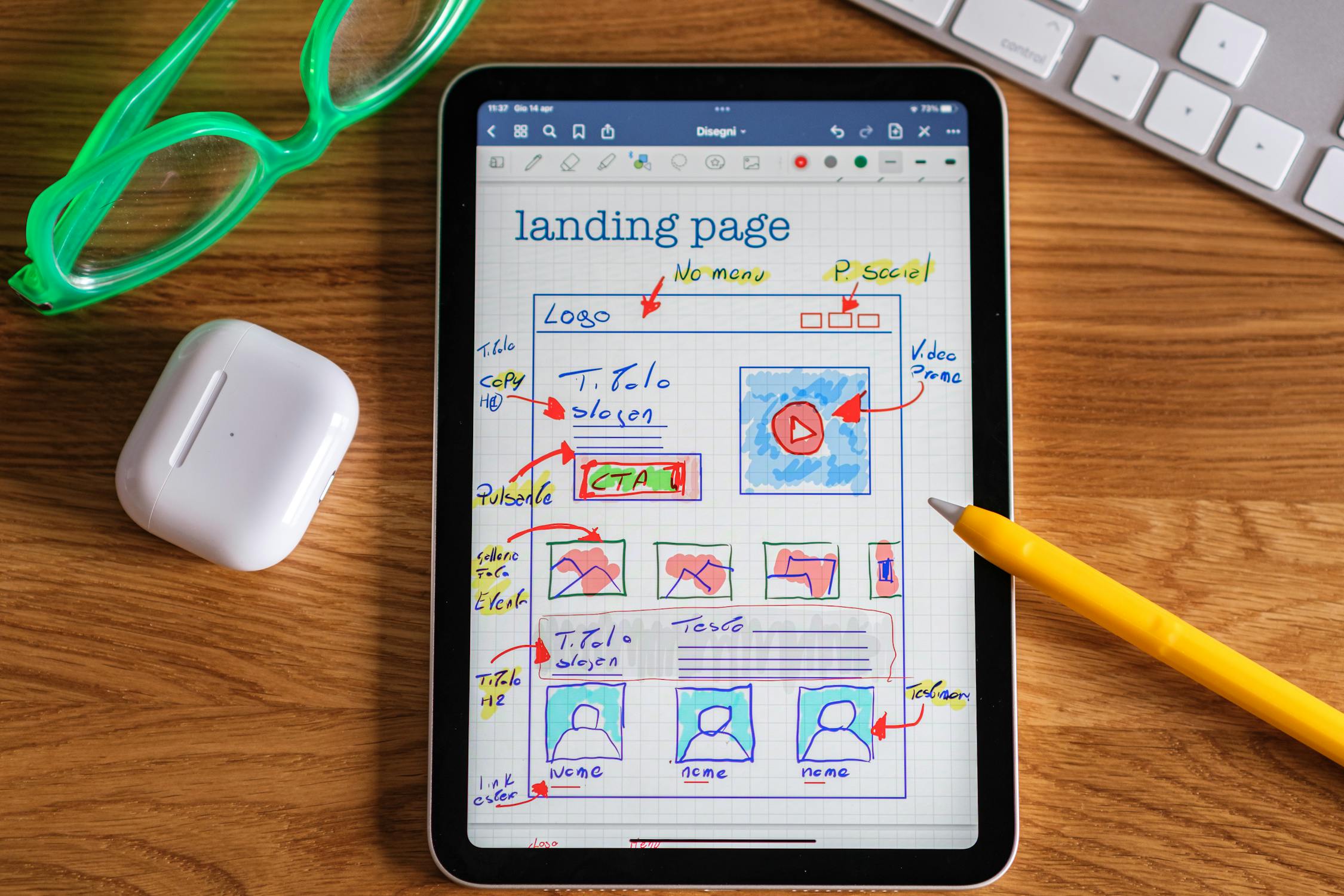Many entrepreneurs struggle with turning leads into loyal customers. This guide on optimizing your sales funnel for growth addresses this challenge directly. It will explore key areas such as understanding the sales funnel stages and crafting compelling content tailored for your target audience. By implementing the strategies outlined, readers can improve engagement and boost conversions. With the right insights, this content aims to transform an often frustrating process into a streamlined path toward customer acquisition and sustained business growth.
Key Takeaways
- Understanding sales funnel stages can significantly improve conversions and customer engagement
- Creating detailed buyer personas enhances targeted messaging and customer connections
- Engaging content across all stages keeps potential customers interested and informed
- Effective call-to-action placement boosts user engagement and conversion rates
- Tracking key metrics provides insights to optimize strategies for better performance
Understanding the Sales Funnel and Its Stages

Sales funnels consist of several stages that guide potential customers from awareness to purchase. Understanding each stage—awareness, interest, decision, and action—helps businesses boost conversions and build credibility. Automation plays a crucial role in streamlining processes, fostering desire, and ensuring a smooth transition through the funnel. Exploring these stages equips marketers with insights to optimize their sales funnels for growth.
Defining the Stages of a Sales Funnel
The sales funnel stages are crucial to understanding how potential customers interact with a brand. These stages include brand awareness, where customers first discover the business, followed by interest, where they seek more information. As prospects move toward decision, they weigh options, ultimately leading to action, where a purchase is made—each stage plays a pivotal role in ensuring customer success and aligning with the target audience’s needs.
- Brand Awareness: Customers learn about the business.
- Interest: Prospects seek further information.
- Decision: Customers evaluate their options.
- Action: Final purchase occurs.
The Role of Each Stage in Driving Growth
Each stage of a sales funnel plays an essential role in driving growth, particularly in optimizing conversion funnels. Brand awareness establishes a solid foundation, where effective headlines can capture attention and generate interest. As prospects move through to decision-making, addressing their needs will influence their journey, ultimately leading to action and increased return on investment. To further enhance efficiency, integrating search engine optimization strategies can help attract more visitors to the top of the funnel, boosting the potential for conversions right through to the cart.
Identifying Your Target Audience for Enhanced Engagement

Understanding your target audience is fundamental for enhancing engagement and optimizing the sales funnel conversion. Analyzing customer demographics and behavior provides insights into preferences. Creating buyer personas helps in precision targeting, while segmenting audiences allows for tailored messaging. Each of these concepts serves as critical touchpoints in the sales process, ensuring more effective communication and improved conversions.
Analyzing Customer Demographics and Behavior
Analyzing customer demographics and behavior is vital for enhancing customer engagement within the sales funnel. Understanding who the audience is, along with their interests and motivations, allows businesses to tailor their value proposition effectively. Utilizing platforms like UserPilot can aid in tracking user interactions, providing insights that inform targeted messaging and the development of loyalty programs to cultivate long-lasting relationships with customers.
Creating Buyer Personas for Precision Targeting
Creating buyer personas is essential for precise targeting within a sales funnel, as it helps businesses connect with potential customers effectively. By understanding the user experience and specific needs of different segments, marketers can craft tailored messages that resonate. Utilizing tools that act as magnets, such as high-quality content or social proof, will attract the right audience and guide them through the funnel more efficiently:
- Identify key demographics and preferences of your audience.
- Develop detailed buyer personas to represent different segments of potential customers.
- Use insights from personas to enhance user experience in your funnel builder.
Segmenting Your Audience for Tailored Messaging
Segmenting an audience for tailored messaging is a key strategy in enhancing the customer journey and boosting customer retention throughout the funnel stages. By dividing potential customers into specific groups based on characteristics or behaviors, businesses can create targeted communications that address the unique needs of each segment. For example, a company might use data from a white paper on consumer preferences to develop personalized campaigns, ensuring that messaging resonates effectively with various audience segments. This focused approach is made easier with tools like Optimizely, which allow for precise segmentation and improved engagement.
| Audience Segment | Key Characteristics | Messaging Strategy |
|---|---|---|
| New Customers | Seeking information and value | Highlight benefits and introductory offers |
| Returning Customers | Previous engagement and interest | Share updates and loyalty programs |
| High-Value Clients | Long-term relationship and purchase history | Provide exclusivity and tailored experiences |
Crafting Compelling Content for Every Stage of the Funnel
Creating effective content at each stage of the sales funnel is vital for optimizing growth and improving customer experience. Developing awareness-centric content helps capture attention and reduce bounce rates, while engaging content during consideration keeps prospects interested. Finally, persuasive content that encourages decision-making can enhance revenue through targeted email marketing strategies, leading to successful conversions.
Developing Awareness-Centric Content
Developing awareness-centric content is essential for optimizing an ecommerce sales funnel, as it captures the attention of potential customers right from the start. Through the use of personalization, businesses can tailor their messaging and visuals to resonate with their audience, reducing friction in their journey and improving overall efficiency. Examples of effective content include engaging blog posts, attention-grabbing social media updates, and informative videos that address common pain points, guiding prospects towards further interaction:
| Content Type | Description | Benefits |
|---|---|---|
| Blog Posts | Informative articles that address current trends or pain points. | Build credibility and drive traffic. |
| Social Media Updates | Short, engaging content highlighting key offerings. | Increase brand visibility and engagement. |
| Informative Videos | Visual content explaining product benefits or features. | Capture attention and convey messages quickly. |
Engaging Content for Consideration
Engaging content for consideration must effectively communicate a product’s value proposition to potential customers. By leveraging email marketing strategies, such as well-crafted newsletters, businesses can keep prospects informed about product features and benefits while addressing any concerns to enhance customer satisfaction. It is important to provide insightful resources, like case studies or comparison stacks, that help prospects visualize how the product solves their specific problems, ultimately guiding them closer to making a decision.
Persuasive Content Encouraging Decision-Making
Creating persuasive content that encourages decision-making is a critical aspect of conversion funnel optimization. This content must effectively resonate with a specific persona, answering potential customer concerns while highlighting the benefits of a product. Incorporating strong calls to action within funnel pages and ensuring a seamless transition to the shopping cart can significantly boost conversion rates, guiding individuals confidently toward making a purchase.
Improving Landing Pages to Maximize Conversions

High-converting landing pages are essential for effective sales funnel optimization. Key elements, such as clear headlines and user-friendly design, grab attention and engage visitors. A/B testing provides ongoing insights to refine these pages for improved performance. Additionally, ensuring mobile responsiveness is critical in a software as a service market, enabling a seamless user experience across devices.
Key Elements of High-Converting Landing Pages
High-converting landing pages are integral to a successful marketing funnel. A well-crafted strategy includes clear headlines that instantly communicate the value and purpose of the offer. Additionally, incorporating elements like persuasive calls to action and opportunities for visitors to enter their email address ensures increased engagement and encourages word of mouth among users. Visual aids, such as infographics, can effectively highlight key points, making it easier for potential customers to understand the benefits being presented.
A/B Testing for Continuous Improvement
A/B testing is a powerful tool that aids businesses in achieving conversion rate optimization for landing pages. By presenting different versions of a landing page to consumers, marketers gain insights into which elements resonate better at the awareness stage of their journey. Utilizing heat maps can further enhance this understanding, as they reveal user behavior on each version, enabling businesses to fine-tune their approach and increase customer engagement effectively.
Ensuring Mobile Responsiveness
Ensuring mobile responsiveness is essential for maximizing conversions within a sales funnel. As research shows, more consumers rely on their mobile devices for browsing and shopping, which makes a mobile-friendly design a requirement in any successful marketing strategy. This adaptability not only improves customer service by providing a seamless user experience but also allows for better copywriting optimization, ensuring that key messages resonate with users on all devices.
| Element | Importance | Best Practices |
|---|---|---|
| Responsive Design | Provides seamless user experience across devices | Use flexible grids and images |
| Fast Loading Times | Reduces bounce rates and improves retention | Optimize images and scripts |
| Easy Navigation | Enhances user experience and boosts engagement | Implement straightforward menus and buttons |
Implementing Effective Call-to-Action Strategies
Effective call-to-action (CTA) strategies are essential for optimizing a sales funnel, particularly within a niche market. Designing attractive and persuasive CTAs captures leads while ensuring they stand out on landing pages. Placement strategies further enhance visibility, guiding users toward the intended action. Aligning CTAs with user intent elevates engagement, making it easier for prospects to navigate through the funnel.
Designing Attractive and Persuasive CTAs
Designing attractive and persuasive call-to-action (CTA) elements is vital for optimizing sales funnels and increasing conversions. Effective CTAs should clearly articulate the value of taking action at the point of sale, leveraging content marketing insights that resonate with the target audience. By utilizing compelling language and strategic placement, such as in funnels or landing pages, businesses can guide users towards the desired action, enhancing their experience and interaction with cloud computing solutions.
| CTA Element | Description | Best Practices |
|---|---|---|
| Clear Messaging | Directly conveys the action and its benefits. | Use simple, action-oriented language. |
| Visual Appeal | Attracts attention and encourages clicks. | Incorporate eye-catching colors and designs. |
| Strategic Placement | Ensures visibility and accessibility. | Position CTAs prominently within the content. |
Placement Strategies for Optimal Visibility
Placement strategies play a pivotal role in achieving improved conversion rates for a sales funnel. An effective call-to-action (CTA) should be strategically positioned on a web page to ensure maximum visibility and engagement. Understanding where to place CTAs—in relation to the unique selling proposition of the brand—can guide visitors toward taking meaningful actions, enhancing their overall experience and driving sales.
Aligning CTAs With User Intent
Aligning call-to-action (CTA) elements with user intent is critical for maximizing usability and driving lead generation within a sales funnel. By understanding the specific pain points that potential customers experience, businesses can craft CTAs that resonate deeply with their audience, encouraging them to take the desired action. This strategic approach not only boosts immediate engagement but also fosters brand loyalty by showing customers that their needs are valued and understood:
- Identify user pain points to tailor CTAs effectively.
- Create clear and actionable messages that address audience needs.
- Monitor CTA performance to enhance lead generation efforts.
Analyzing Data to Drive Ongoing Funnel Optimization

Tracking key metrics is essential for successfully optimizing a conversion funnel. Understanding analytics helps identify areas for improvement, while utilizing analytics tools provides comprehensive insights into customer behavior. Making data-driven adjustments to strategy allows businesses to refine their approach based on pricing, social media platforms, and engagement trends, ultimately driving growth.
Key Metrics to Track for Success
Tracking key metrics is vital for conversion optimization in a sales funnel. Metrics such as conversion rates, customer acquisition costs, and retention percentages provide insights into how effectively the sales team engages potential customers. For instance, monitoring onboarding success rates can reveal how well new customers transition through the funnel, allowing for targeted improvements that enhance overall conversion.
- Monitor conversion rates to evaluate funnel efficiency.
- Track customer acquisition costs for budget management.
- Analyze retention percentages to assess long-term engagement.
- Evaluate onboarding success rates to improve customer experience.
Utilizing Analytics Tools for Comprehensive Insights
Utilizing analytics tools is vital for gaining comprehensive insights into customer behavior throughout the sales funnel. For instance, tracking interactions via social media marketing and observing checkout patterns can reveal where potential customers may struggle or drop off in the purchasing process. By leveraging machine learning, businesses can analyze these behaviors to fine-tune their strategies, creating targeted content, such as an ebook, that addresses specific pain points and encourages users to move closer to a final purchase.
Making Data-Driven Adjustments to Strategy
Making data-driven adjustments to strategy is essential for optimizing a sales funnel effectively. By utilizing tools such as Hotjar for user behavior analytics and conducting market research to understand customer preferences, businesses can gather valuable insights. For example, tracking social media interactions can reveal which content resonates most with the audience, allowing marketers to refine their approaches and create targeted campaigns that drive higher conversions.
- Implement user behavior analytics using tools like Hotjar.
- Conduct market research to understand client preferences.
- Analyze social media interactions to determine effective content.
Conclusion
Optimizing your sales funnel is crucial for driving growth and enhancing customer engagement. By understanding the stages of the funnel and effectively targeting your audience, businesses can tailor their messaging and content to meet specific needs. Implementing strategic call-to-action elements and continually analyzing performance ensures a seamless journey from awareness to purchase. Prioritizing these efforts fosters trust and loyalty, ultimately leading to increased conversions and sustainable success.






